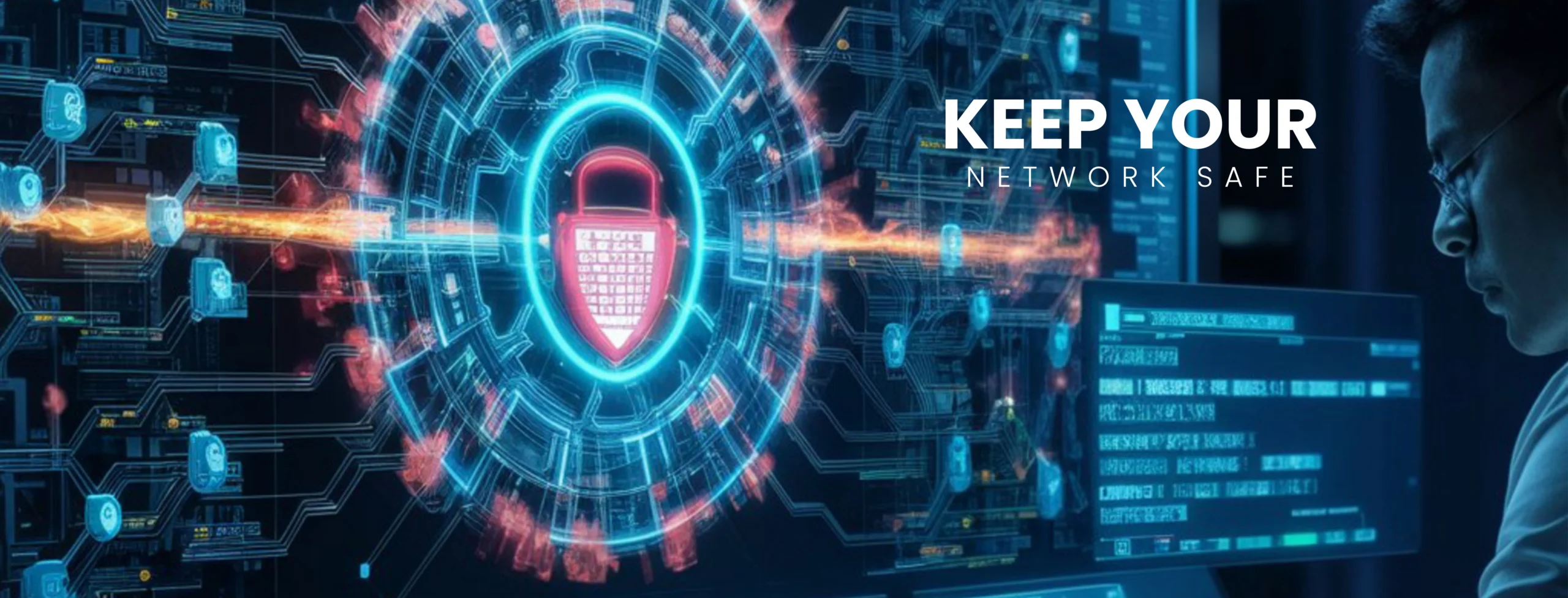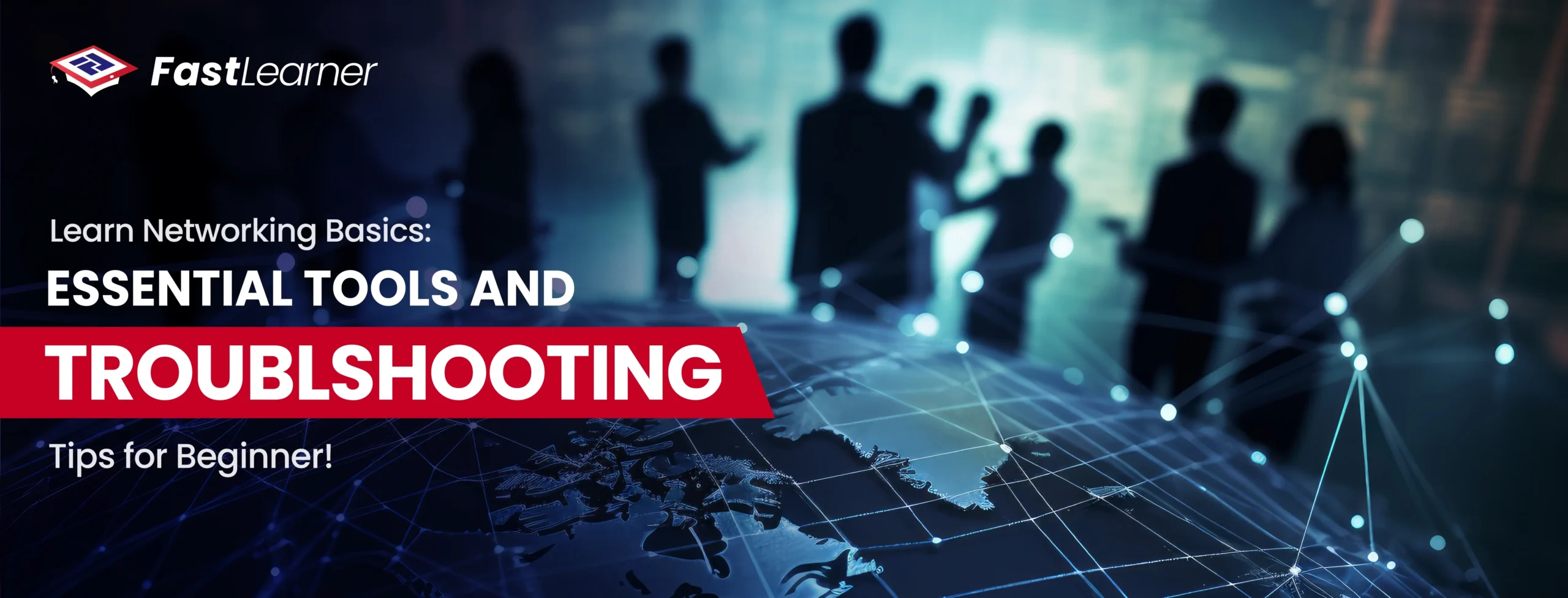In today’s digital-first world, networking skills are indispensable, serving as the bedrock of modern communication and technology. Whether you’re a budding IT enthusiast exploring career opportunities, a small business owner striving to optimize operations, or simply someone curious about the inner workings of the internet, learning networking basics is the first step toward building technical proficiency.
Networking is more than just connecting devices; it encompasses the protocols, systems, and security measures that keep data flowing seamlessly across the globe. From enabling instant messaging and online meetings to managing vast corporate infrastructures, networks are the invisible threads tying our digital lives together.
Understanding the fundamentals of communications and networking is beneficial for professionals and invaluable for individuals managing home networks or troubleshooting day-to-day connectivity issues.
In this comprehensive guide, we will learn networking basics with essential tools and troubleshooting tips for beginners. We will also break down the core networking concepts and share troubleshooting tips tailored for beginners.
Whether starting from scratch or seeking to sharpen your skills, this article offers the clarity and insights you need to navigate the networking world confidently.
Learn Networking Basics: (A Brief Overview)
- This section covers networking basics, key terms, device types, and network structures (LAN, WAN, etc.).
- Essential networking devices include routers, switches, modems, and access points, as well as how they function within a network.
- Getting familiar with IP addressing, TCP/IP, DNS, and other core protocols that enable communication across networks.
- Fundamental security concepts, including firewalls, encryption, and VPNs, to help protect your network from threats.
- Exploring practical tools like Wireshark, Cisco Packet Tracer, and command-line utilities (Ping, Traceroute) for network analysis and troubleshooting.
- Gaining troubleshooting skills with step-by-step methods to diagnose and resolve common network issues.
- A structured approach to learning, with recommendations for further resources, labs, and community forums.
Understanding the Fundamentals of Communications and Networking

Before diving into tools and troubleshooting, it’s essential to grasp the basic networking fundamentals. Networking connects multiple devices (computers, routers, switches, etc.) to share resources and information. Here are the core concepts you need to understand:
1. Types of Networks
- Local Area Network (LAN): A network limited to a small geographic area, like a home or office.
- Wide-area network (WAN): This network covers larger areas and often connects multiple LANs. The Internet is the most prominent example.
- Wireless Networks: Networks that use radio waves to connect devices without physical cables.
2. Networking Devices
- Router: Directs data packets between networks.
- Switch: Connects devices within a network, like computers and printers.
- Modem: Converts internet signals to usable formats for devices.
- Access Point: Extends Wi-Fi connectivity in a network.
3. Protocols and IP Addressing
- Internet Protocol (IP): Assigns unique addresses to devices for communication.
- Transmission Control Protocol (TCP): Ensures reliable data delivery.
- Domain Name System (DNS): Translates website names (e.g., fastlearner.ai) into IP addresses.
How to Learn Networking Basics: Tools to Get Started

Now that you understand the fundamentals of communications and networking, it’s time to explore tools to help you learn and practice these concepts effectively.
1. Simulation Software
Tools like Cisco Packet Tracer and GNS3 allow you to create virtual networks and experiment with configurations in a risk-free environment. These platforms are excellent for understanding basic networking fundamentals and testing different setups.
2. Network Monitoring Tools
Wireshark: A popular tool for analyzing network traffic. Beginners can use it to observe how data moves through a network.
Ping and Traceroute: Built-in commands on most operating systems that help diagnose connectivity issues.
3. Hardware for Hands-On Practice
Invest in a primary router and switch to build a small home lab. Experimenting with physical devices can deepen your understanding of networking hardware and configurations.
Networking Security Fundamentals: Keeping Your Network Safe

As you dive deeper into networking, it’s crucial to understand networking security fundamentals. Security is a critical aspect of network management, protecting data from threats like hacking and unauthorized access.
1. Basic Security Measures
- Firewalls: Act as a barrier between your network and potential threats.
- Encryption: Protects data by converting it into an unreadable format without a decryption key.
- Strong Passwords: Use complex, unique passwords for all networking devices.
2. Common Networking Threats
- Phishing Attacks: Fake emails or websites designed to steal your credentials.
- Malware: Malicious software that can damage or gain access to your network.
- DDoS Attacks: Overwhelms a network with excessive traffic, causing it to crash.
3. Tips for Beginners
- Regularly update your router’s firmware.
- Use Virtual Private Networks (VPNs) to secure data over public Wi-Fi.
- Enable WPA3 encryption for wireless networks.
Troubleshooting Tips for Networking Issues

Networking issues are inevitable, but knowing how to address them effectively can save you time and frustration. Here are some troubleshooting tips for beginners:
1. Identify the Problem
- Use the Ping command to check connectivity between devices.
- Run Traceroute to locate where the connection is failing.
2. Check Physical Connections
- Ensure all cables are correctly plugged in and undamaged.
- Verify that devices like routers and modems are powered on and functioning.
3. Reset and Reconfigure
- Restart your router or modem. Many networking issues can be resolved with a simple reset.
- Check and update your network configurations to ensure they match the setup requirements.
4. Monitor Network Performance
- Use tools like Wireshark to analyze traffic and detect bottlenecks.
- Check for firmware updates on your router to improve performance and security.
If you want to learn more about troubleshooting in computer networking, read our article on the FastLearner blog for a better understanding.
Building a Learning Path for Networking Basics

To master networking, a structured learning approach is essential. Here’s how to effectively learn networking basics step by step:
Understand the Theory
Start with books or online resources that cover basic networking fundamentals. Learning platforms like Fast Learner provides beginner-friendly courses tailored to your pace.
Practice Regularly
Use tools like Cisco Packet Tracer or set up a small home lab to practically test your knowledge.
Take Advanced Courses
Once comfortable with the basics, dive into advanced topics like network virtualization, cloud networking, and networking security fundamentals.
Join Networking Communities
Participate in forums like Cisco Networking Academy or Reddit communities dedicated to networking. Learning from peers and experts can significantly enhance your skills.
Learn Networking Basics: Essential Tools and Troubleshooting Tips(In a Nutshell)
Mastering networking doesn’t have to be overwhelming. You can build a strong foundation in this essential skill by understanding the fundamentals of communications and networking, utilizing the right tools, and adopting a structured learning path. Start small, practice consistently, and stay curious about the evolving networking world.
Whether troubleshooting a home network or aspiring to manage enterprise-level systems, learning networking basics and essential tools, along with troubleshooting tips, opens a world of opportunities for beginners. Explore hands-on tools, enhance your troubleshooting skills, and take the first step toward becoming a networking expert today!
FAQs About Learning Networking Basics
How do I start learning networking for beginners?
Begin with basic concepts like IP addresses, subnetting, and protocols (e.g., TCP/IP). Use beginner-friendly resources like online courses, books, or tutorials.
How do I learn network troubleshooting?
Practice identifying and solving common issues using tools like ping, traceroute, and network logs. Study troubleshooting methodologies and simulate problems in lab environments.
What are the 3 essential networking basics?
The three essentials are understanding IP addressing, knowledge of network protocols (e.g., TCP/IP, DNS), and familiarity with network devices (e.g., routers, switches).
How to self-learn networking?
Use online courses, networking simulators, and hands-on practice. Join forums, study guides, and certification paths like CCNA for structured learning.



